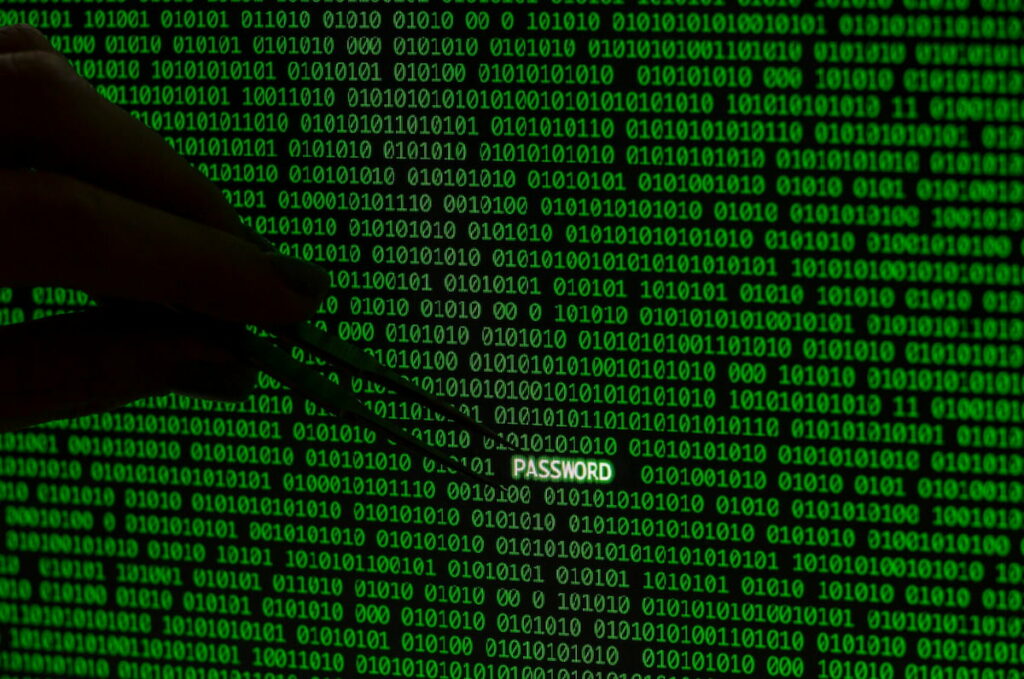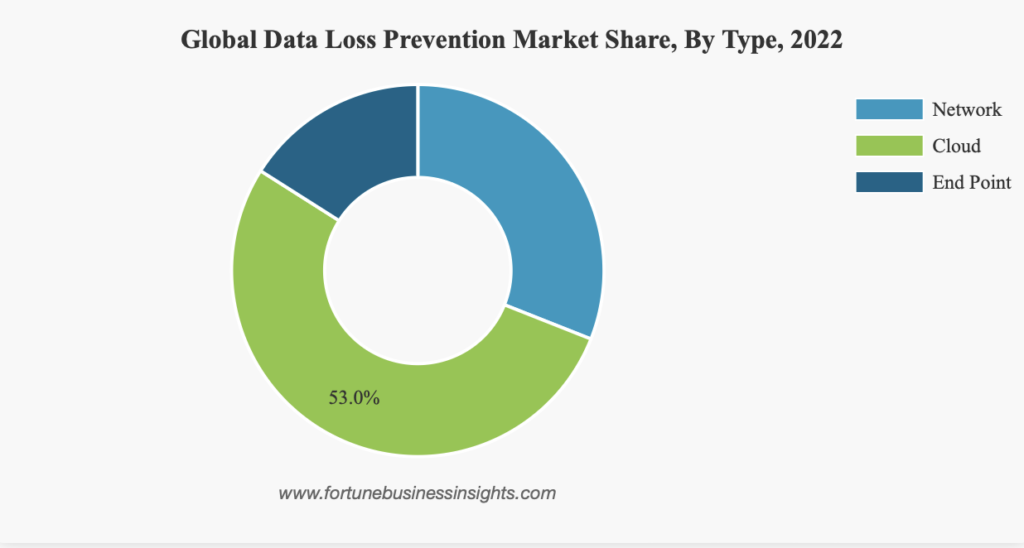What is Data Loss Prevention (DLP)? Definition, Types & Tips
Imagine you’re sending out an important email containing sensitive company information. Just as you hit “send,” a weird feeling washes over you – did you remember to attach the right file? What if it lands in the wrong hands? Well, this scenario, and many others like it, underscore the critical need for robust Data Loss Prevention (DLP) strategies. Today, data is the lifeblood of organizations and understanding DLP is not just advisable. It’s absolutely essential. In the article, we’re discussing Data Loss Prevention – what it is, its types, and invaluable tips to keep your info safe.
What is DLP
Data Loss Prevention (DLP) is primarily a plan and a set of technologies. They prevent the leakage of important records from an organization. The main goal is to protect confidential information.
First and foremost, these are the financial data of clients and the company’s intellectual property. Then, of course, it’s the personal records of employees and other important info resources.
The main threats from which they need to be protected are:
- Unauthorized access,
- Leaks;
- Accidental losses.
Key Concepts Underlying DLP
So, let’s now discover the 5 key concepts that form the foundation of the entire DLP concept.
- Identification of Valuable Data
This is the first step in data security (DS). To begin with, we need to understand what to safeguard. DLP helps us identify which info is most valuable and requires special safety.
This could include credit card numbers, customer personal records, financial info, or company secrets. It all depends on the specifics of the business and the records it possesses.
For example, if you work in a medical organization, DLP can help identify patient medical records as particularly valuable data requiring special attention.
- Monitoring Data Transmission and Usage
DLP ensures continuous monitoring of data transmission and usage within and outside the company. This allows us to keep track of what info is being transmitted, to whom, and for what purpose. It can monitor data transmission via email, cloud storage, USB drives, and other communication channels.
How does it work? It’s quite simple. Suppose your employee tries to send an unprotected financial data file via email. DLP can automatically block this attempt. Moreover, it can also send a notification to the administrator.
- Application of Strict Security Rules
DLP allows you to create and apply security rules according to your organization’s requirements, including those for your VoIP phone system. These rules will determine who has access to the records, how it can be used and transmitted, as well as what actions are allowed or prohibited.
This may include blocking access to confidential records from outside or applying encryption to data in motion and at rest. Rules depend on the needs and characteristics of your biz.
For example, you can set a rule that prohibits copying or downloading confidential files to external devices. This means no one can download a file to, say, USB drives.
- Data Encryption
This aspect of DLP serves as a powerful means of protecting confidential records. How? All thanks to its transformation into an unreadable form using mathematical algorithms.
It turns your confidential info into an unintelligible code that can only be deciphered by those with the correct key. Encryption can work at different levels: when data is transmitted over the network (including VPN), when it is stored on devices (such as hard drives or cloud storage), and even when it is processed on a computer or server.
Various mathematical methods are used for reliable encryption. These include symmetric and asymmetric algorithms. Most commonly used are:
- AES;
- RSA;
- ECC.
Such algorithms ensure that encrypted records remain secure even in the event of unauthorized access attempts.
- Risk Analysis and Management
This aspect of DLP represents a systematic approach to identifying, analyzing, and managing risks associated with record leaks. And the key word here is “systematic.” It’s no wonder Bruce Schneier, a renowned American cybersecurity expert, cryptographer, and author, once said:
“The best security happens when it becomes part of people’s daily routines.”
Various methods and tools are utilized for this purpose. Yes, there are plenty, ranging from statistical models and machine learning to expert assessments and security standards.
The risk analysis process includes:
- Assessing the likelihood of security threats occurring;
- Evaluating the potential consequences of info leaks for the business;
- Determining the effectiveness of existing security measures.
Based on the results of the evaluation, you can develop DS plans. What are they?
- Improving existing DLP mechanisms;
- Implementing new technologies and security policies;
- Training staff on information security issues.
It all depends on the results obtained and the characteristics of your business systems. We’ll discuss this in more detail in the next section.
Tips for Data Loss Prevention (DLP)

Here are some tips on how to successfully implement a DLP system and make it work flawlessly to meet all the needs of your business.
Creating a Data Security Policy
Creating a DS strategy is the foundation of your leak safeguarding. Start by identifying valuable files that need shielding and classify it by levels of confidentiality. Develop a document containing all rules and procedures related to record access, use, storage, and deletion on Laptops. This document should be clear and accessible to all employees.
Define the roles and responsibilities of employees. Appoint responsible individuals who will monitor policy compliance and respond to security incidents. Provide regular staff training on policy compliance and risk management. Also, ensure all employees are aware of the rules and leak prevention measures. Employee attendance at these training sessions should be tracked and enforced to guarantee comprehensive understanding across the organization. Develop a document containing all rules and procedures related to record access, use, storage, and deletion. You might even consider using an AI book writer to help draft comprehensive policies efficiently.
Utilize DLP technologies to automate and enforce policy compliance. For example, configure a DLP system to monitor and block unauthorized access attempts to data or their transfer beyond the organization. This step will help minimize leakage risks and ensure compliance with security policies.
Employee Training and Security Awareness
Your staff is not only a team but also the first line of defense against info leaks. Start by conducting short but really informative training sessions to explain the basics of the issue and show how everyone can help protect the company’s records.
Don’t be afraid to openly discuss potential threats and share examples of real-life situations that have occurred in the biz with employees. This will help create an atmosphere where everyone feels personally responsible for DS.
Use training and monitoring technologies such as Learning Management Systems (LMS) and knowledge testing platforms. And, of course, don’t forget to reward employees for actively participating in DS.
Using DLP Technologies
To turn your security policy into reality, you need to use specialized DLP tech. These tools continuously scan records, analyze user behavior, and respond to any security threats.
The first step is to choose the right DLP platform, considering the specifics of your business and security requirements. Modern solutions offer a variety of features:
| Function | Description |
|---|---|
| Email Monitoring | Tracking and analyzing email to detect and prevent leaks of confidential information. |
| Cloud Service Monitoring | Control and audit the use of cloud services to prevent records leaks in the cloud. |
| Mobile Device Monitoring | Tracking activity and controlling access to info on mobile devices to protect against information leaks. |
| User Behavior Analysis | Using machine learning algorithms to identify anomalous user behavior and detect security threats. |
Then configure the DLP system according to what you expect to achieve and security rules. For example, you can set up the system to block the sending of certain files via email or alert about attempts to transfer info through insecure communication channels.
Regular Update and Audit of the DLP System
Hopefully, today, everybody understands that security is an ongoing process, not a one-time event. Whether you’re dealing with on-premise infrastructure or navigating the complexities of multi cloud security, you always need to stay ahead of new threats. Don’t forget about constant monitoring and updating of the system.
It’s important to closely monitor event logs. And, of course, don’t forget to update databases and analysis algorithms so that it’s ready for new potential threats. All because, as Bruce Schneier said,
“Attacks always get better; they never get worse.”
The Future of DLP
Today, DS is becoming increasingly important. Especially considering how valuable digital assets are becoming for companies. DLP plays a key role in protecting this valuable information, and in the future, it will play an even greater role.
One of the main aspects of the future of DLP is the use of more intelligent technologies, such as machine learning and artificial intelligence. These technologies will allow for the creation of more effective threat detection systems. But the coolest thing about them is that they will be able to quickly adapt to new types of attacks and threats.
It’s also important to expect closer integration of DLP with other security systems, such as SIEM and IPS. This will allow companies to create more complex and automated record protection processes. They will better respond to threats in real-time, and perhaps even prevent attacks.
Technical innovations, such as advanced records detection and analysis algorithms, will also be crucial for the future of this technology. These innovations will help improve the efficiency of DLP systems and ensure more accurate and reliable threat detection.
Conclusion
Businesses know the problems that data leaks can cause. Not every business can survive such an incident. Therefore, modern companies are forced to invest money and effort into DS to avoid ending up in a dire situation. There is a set of technologies that helps them ensure the maximum possible record shielding. DLP systems are one of them. They are reliable, and their role and effectiveness grow with each passing day.

